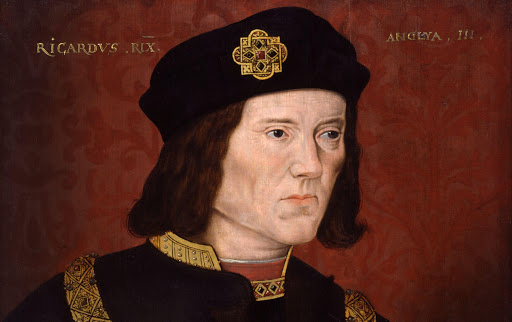
Please note: this blog may contain material unsuitable for younger readers.
The Great Parchment Book is just one of many extraordinary hand-written, manu-script treasures Waterford Treasures displays. All 450 pages are now available worldwide on www.isos.dias.ie and to celebrate we have a Great Calligraphy Festival!
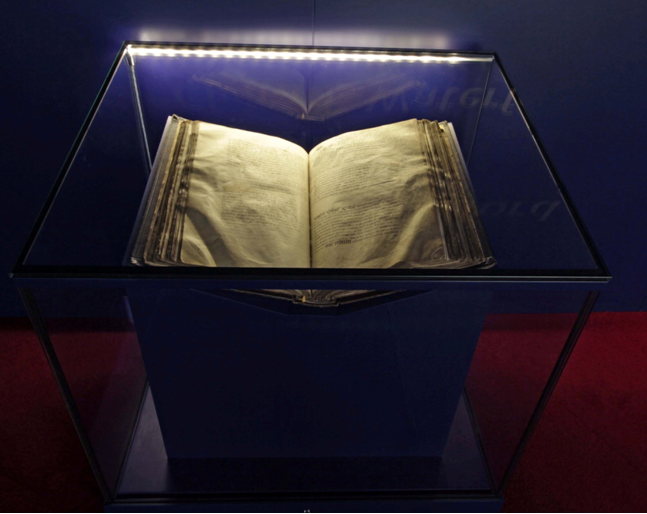
The Great Charter Roll is another manuscript treasure – what the Director calls the first ever Powerpoint presentation!
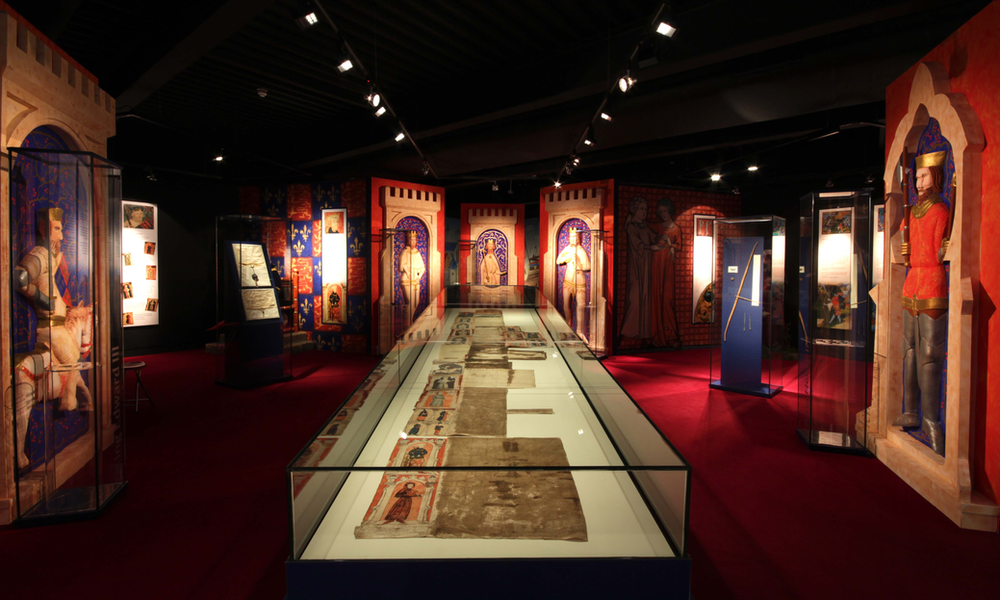
We also display Ireland’s largest collection of royal charters and other handwritten documents. Many are on parchment (which is specially prepared sheep, calf or goat skin) and some are on paper. Paper was first used in Ireland in the 1500s and first manufactured here in the 1600s.
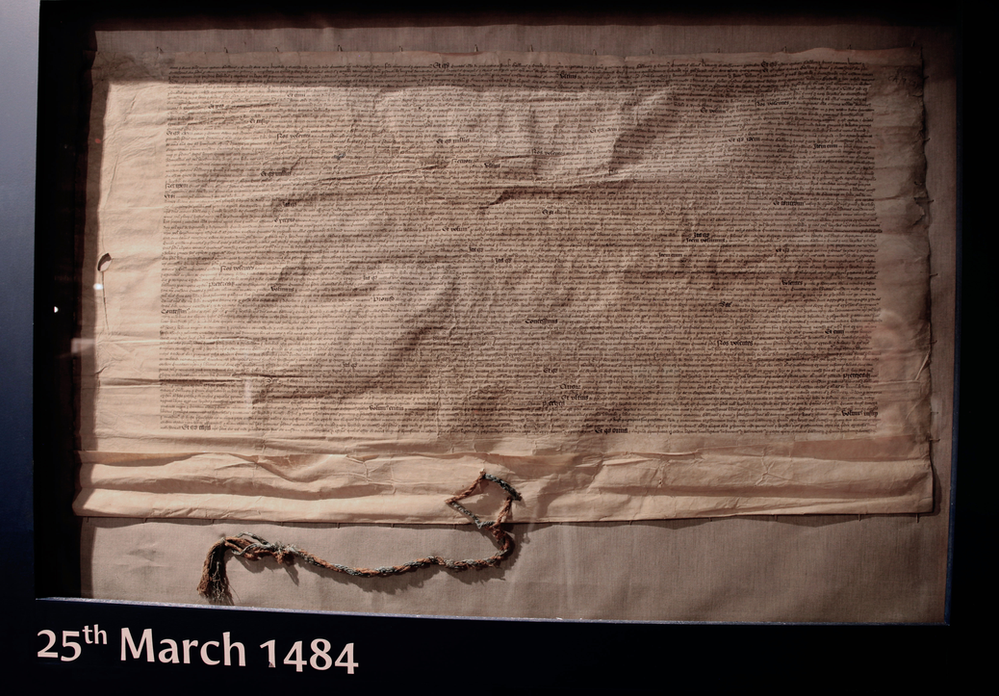
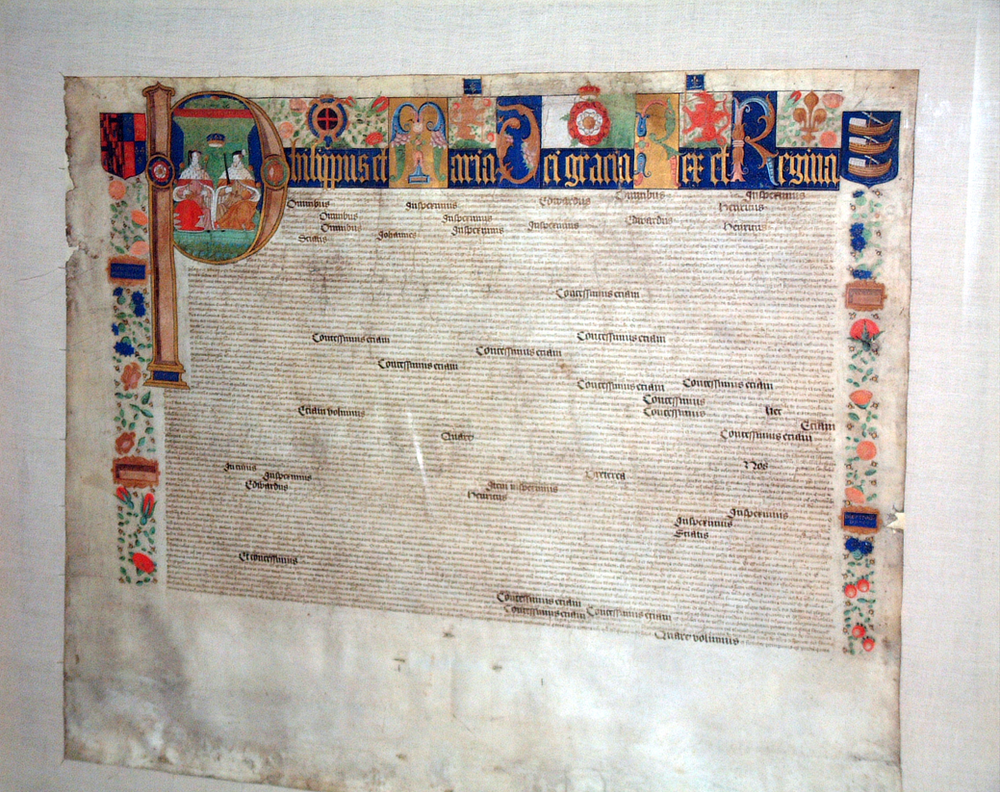
The Great Parchment Book is a Waterford Corporation record and unlike the Charter Roll or the charters it is in the form of a book. The title is stamped in gold leaf on the spine of the book ‘Liber Antiquissimus Civitatis Waterford’ (Most Ancient Book of the City of Waterford), three words in Latin but the name of the city in English.
The Book covers 300 years in Waterford’s story 1356-1649, ending abruptly with Oliver Cromwell at the gates!
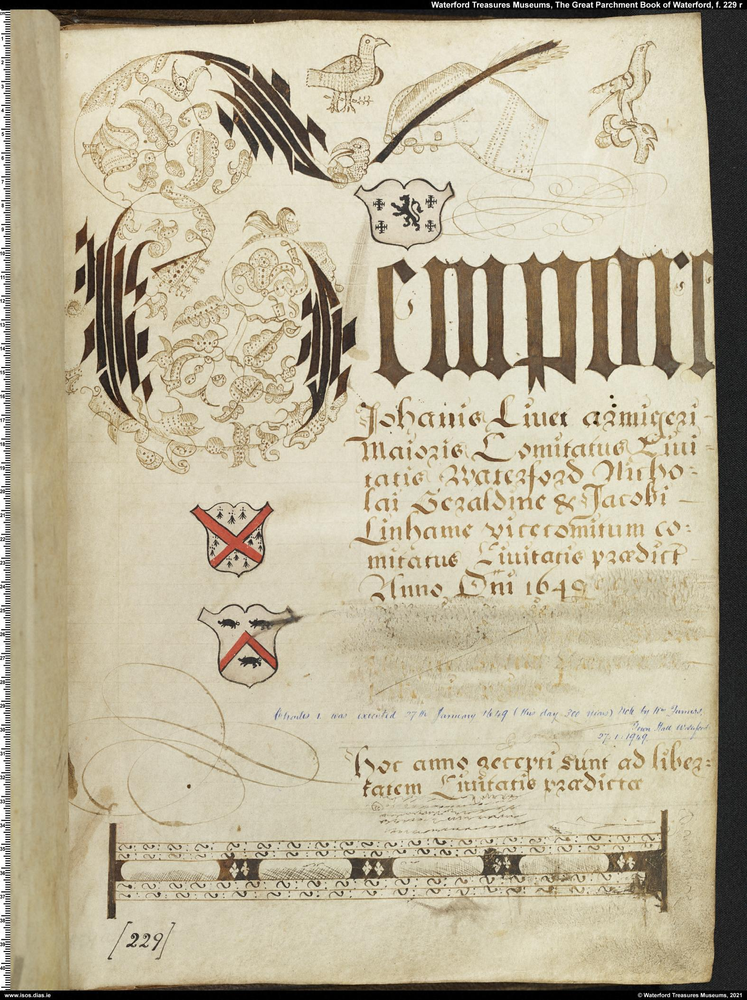
There is a gap for the period 1615 to 1626. Either those pages have been lost or were removed from the records by central or local government officials, perhaps in 1618 when the Dublin government forcibly disbanded Waterford Corporation, seized all our records and transported them to Dublin!
The Book was compiled from at least five older sources, both copied from and actually incorporating some earlier documents. The book was bound together sometime after the final entry in 1649. The script is a Gothic script which is typical of the Middle Ages. The Book is written in Latin, French and English and is the earliest use of English for city records in Ireland.
It contains just one word in Irish – Port Láirge – clearly visible in capitals under the illustration of the city on the extraordinary page for the year 1566.
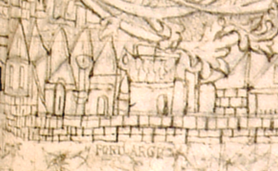
The full texts of two charters granted to Waterford City by Queen Elizabeth I are recorded, written in Latin and there are many references to other royal charters granted to the city.
To quote Dr Niall Byrne: ‘The parchment presents a faint golden hue, while the medieval ink has faded to a slightly brown pigmentation. The only ornamentation in the early section consists in the rubrication [written in red ink] of some capital letters’.
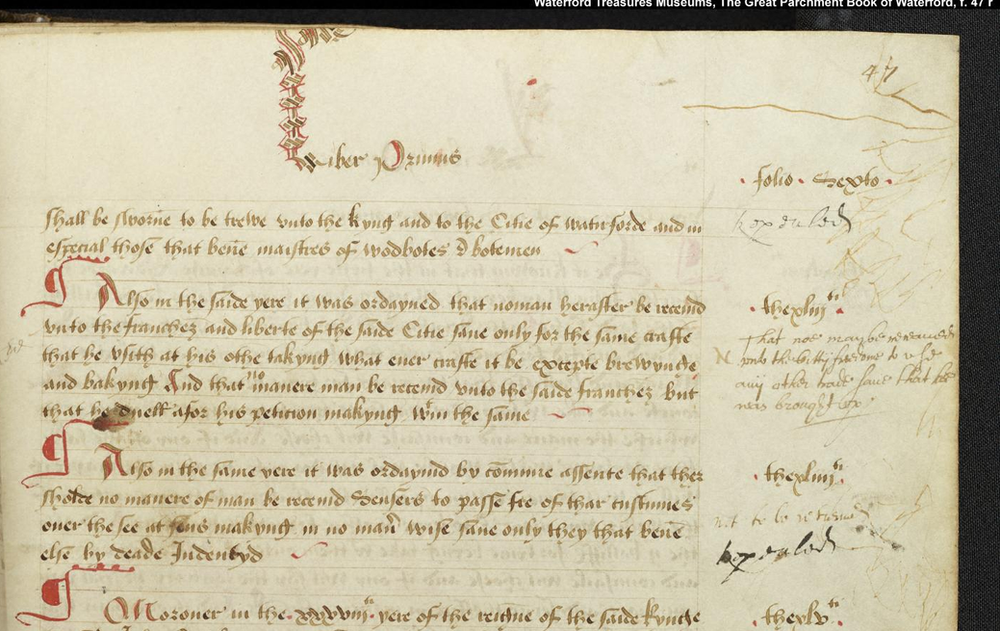
In the first part of the Book there are some 173 bye-laws/ ordinances from which we learn lots of fascinating detail of life in medieval Waterford. For example in 1430 ‘Also the same year by common assent it was ordained that no priest should have no wife or concubine within the City and if they be found the fynders shall have all their clothes and their bodies to the jail..’

In 1566 the city officials tried to control the employment of women in taverns, ‘..for that some .. little weighing the fear of god do sometimes for better utterance of their wines retain naughty corrupt women by whose procurement .. other honest damsels are often drawn to folly.. be it enacted that from the twenty day of June .. never more any woman maid wife wench or widow shall be wine taverner or wine drawer in any place within this City or suburbs..’
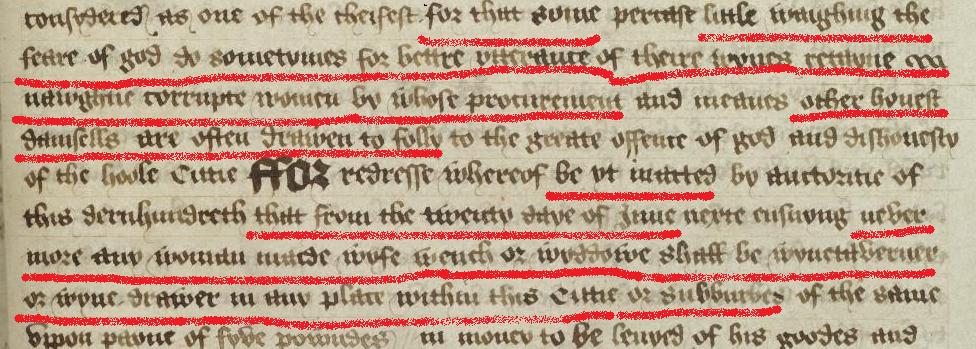
Incidentally, they repeated this prohibition in 1604, first for ‘avoiding ‘the abominable trade of’ whoredom, secondly to avoid the concealment of goods stolen, thirdly for driving away unprofitable dwellers and lastly for strengthening of the City..’
This was part of cleaning up the city when plague was raging here according to the Parchment Book – it killed 2256 people in the year ended 28 September 1604 – 116 deaths weekly in August! The corporation officials realised that the plague was being spread by soldiers of the garrison, who were raiding the houses of the dead at night to steal their clothes and goods, and the successful measures enacted to stop this pilfering, make fascinating reading.
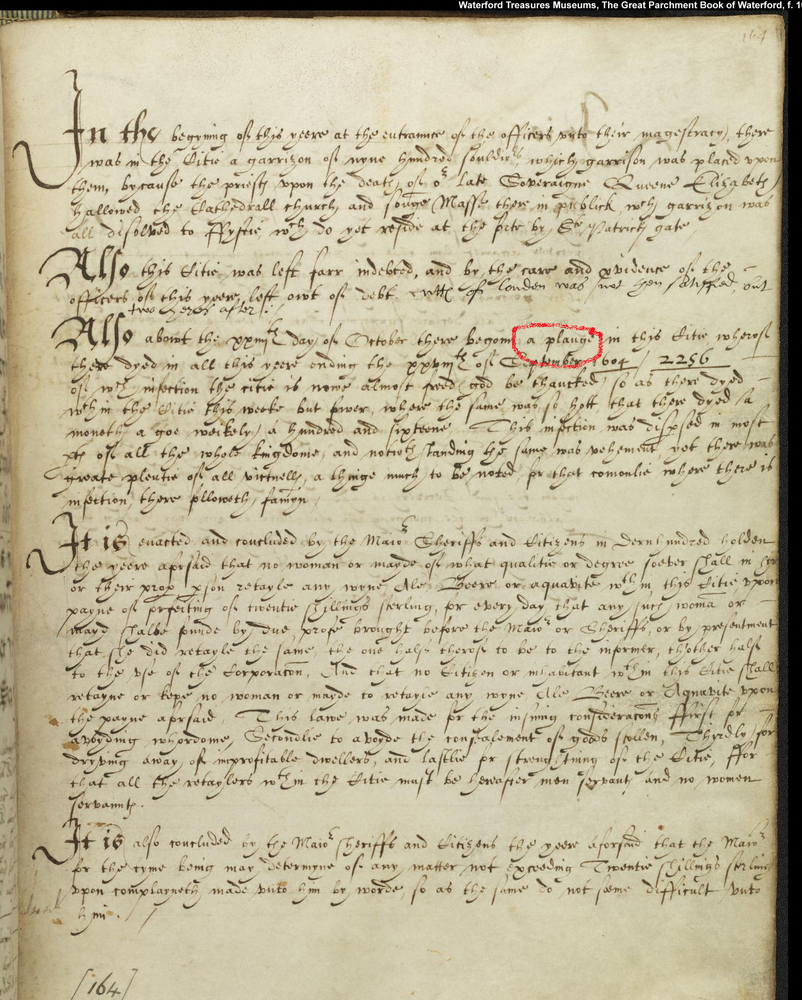
They were always trying to control pigs running through the streets and the sale of raw meat in order not to lose out on tax!
‘Memorand that in the saide year’ – this is 1451 – ‘the 16th day of August, one John Brian of Ross bought a Caravel [a type of boat] laden with wynes at the Passage against the Liberty of the City, for the which he was arrested and by award of four of the Council he was sworn on a book that he should never hereafter buy no manner of merchandise within the franches of this City except fresh fish without licence of Mayor

and bailiffs and if he do the contrary hereof he bind himself to pay to Mayor and commons £10 of money.’

There are details of forgotten locations in medieval Waterford. Niall Byrne counted up mentions of twelve castles, twenty towers, seventeen gates, five walls, six ditches, and eight quays, all components of the defences of Waterford. No wonder that to become a Freeman in 1552 Anthony Power and others paid 2 half barges of stone. The city needed to constantly keep the walls in order! Ten streets, six highways, fifteen lanes, and eighty almost forgotten locations within the city are all mentioned. As are mills, lime kilns, weirs, churches, chapels and a host of other place-names, even the repair of a public clock, mounted on the municipal clock tower over 400 years ago.
Later sections of the Parchment Book have ornate capital letters, particularly the pages which record the names of the mayor and sheriffs annually elected to office. In Latin: ‘Time of James Walsh son of Robert, Mayor, and Patrick Comerford and Robert Walsh son of Peter, Sheriffs of the City of Waterford, AD1575, 17th year of the Serenissime Queen Elizabeth.’ First in Latin and then the second half in English! Lovely script, on a lined page.
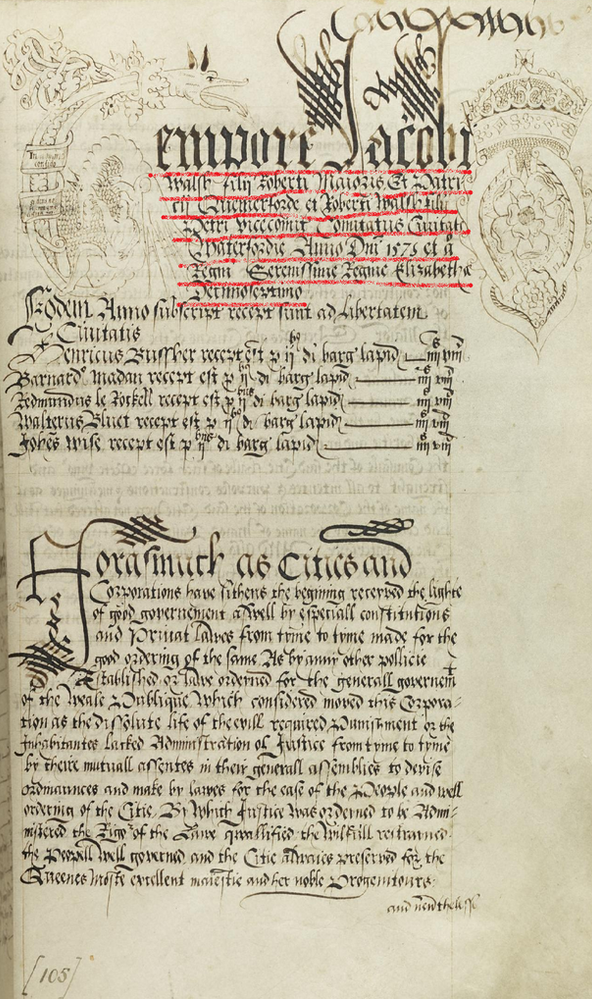
To learn more about the contents of the Book and how it is divided up, I recommend the Introduction in Niall Byrne’s wonderful book, The Great Parchment Book of Waterford (Dublin: Irish Manuscripts Commission, 2007).
There are lots of little doodles and drawings of faces and birds in the Great Parchment Book to give us a giggle. Are they self-portraits of the scribes?
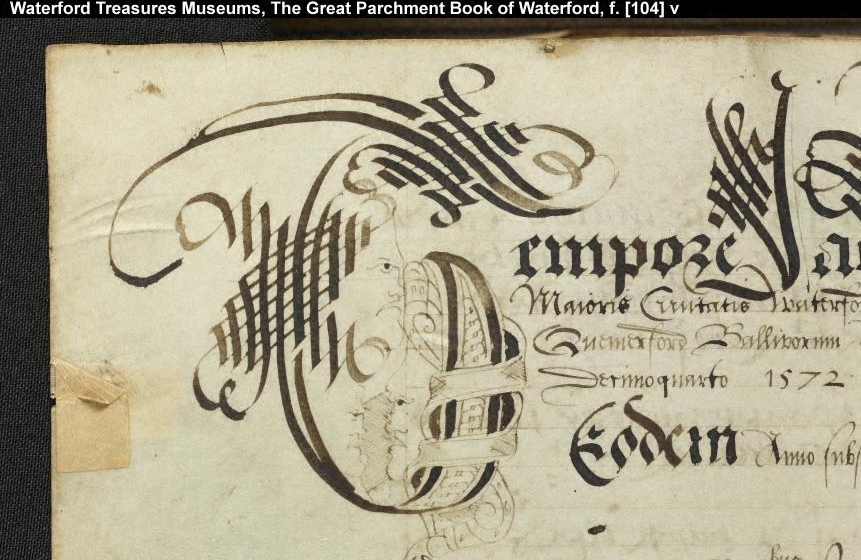
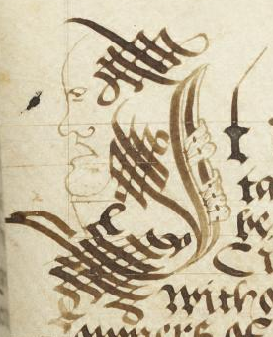
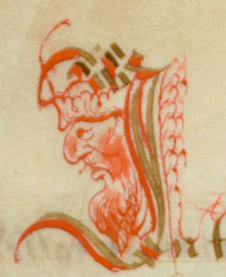
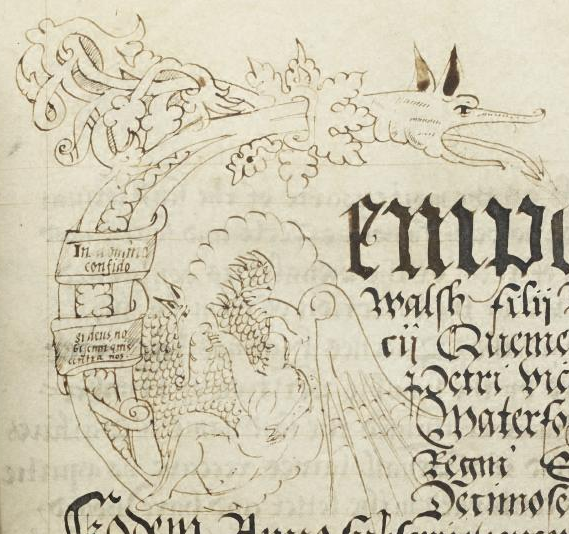
The importance of the Book has been recognized since the nineteenth century and some extracts were published by Sir John T Gilbert in 1884. Solicitors still today consult the Book and the city charters for legal issues such as the extent of Waterford Corporation’s remit over the river.
The content and political importance are fascinating but also the social history – the story of the families whose male members controlled Waterford’s trade and government – Aylwards, Lombards, Dobbyns, Sherlocks, Whites, Leonards, Purcells, Walshes and many others.
I’m also interested in the actual production – who were the scribes who wrote the Book, were they clerks of the Corporation? Who trained them? What was education/ school like in the late Medieval times in Waterford? Who made the ink and the pens? Who produced the vellum? The historian Tim O’Neill will answer some of these questions in his illustrated talk! First catch your calf, kill it, skin it, remove the fat, stretch it but hope holes won’t come in it.
A scribe is someone who writes. Scribere is to write in Latin, the root scrib/ scrip is connected to the Greek grapho, to engrave lines with a sharp pointed pencil. Inscribe/ inscription. The Irish scríobh derives from the Latin word as writing came to Ireland with Latin Christianity. To write in Italian is scrivere/ French écrire/ German schreiben.
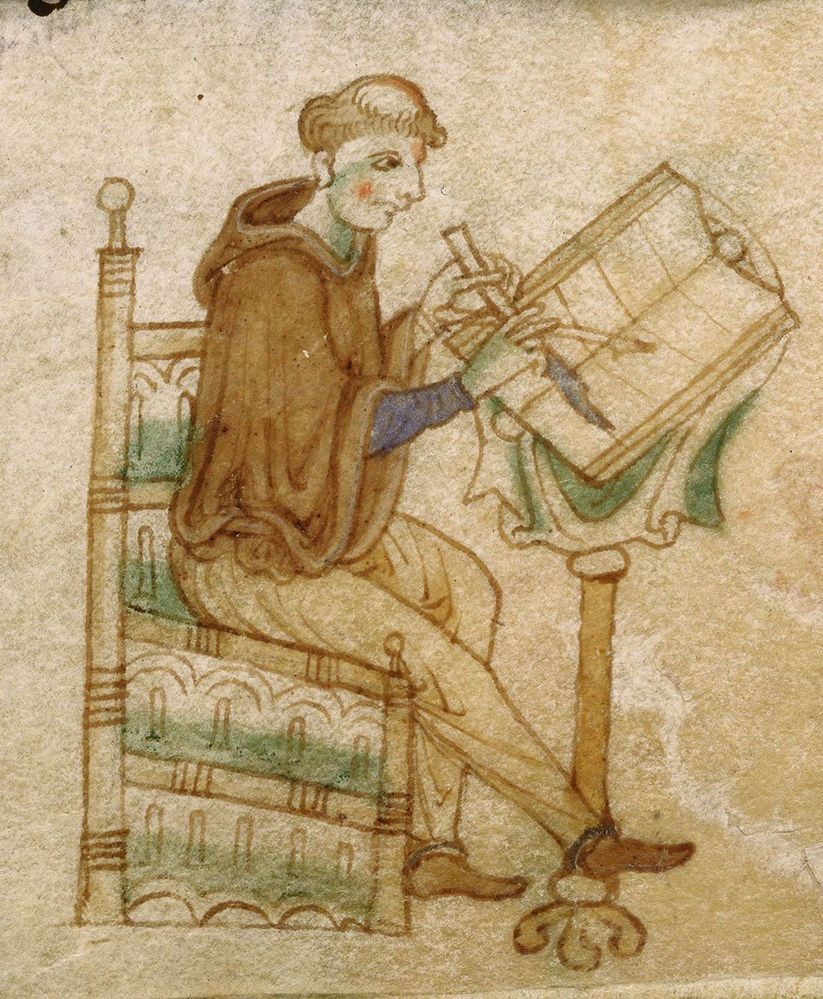
Ireland has an extremely rich tradition of writing and calligraphy. The Ogham alphabet is the earliest form of writing in Ireland and shows some Roman influence. It was invented to inscribe the names of individuals on stones. Carving an ogham stone was the first public signwriting. Religions such as Judaism,Christianity and Islam are religions of the book and place a high value on writing and reading. Many Irish Christian monasteries had a scriptorium (Latin for a place for writing) and the Irish monks developed distinctive styles of writing. The finest is seen in the Book of Kells and other famous manuscripts. Manu-script from Latin for ‘hand’ and ‘written’.
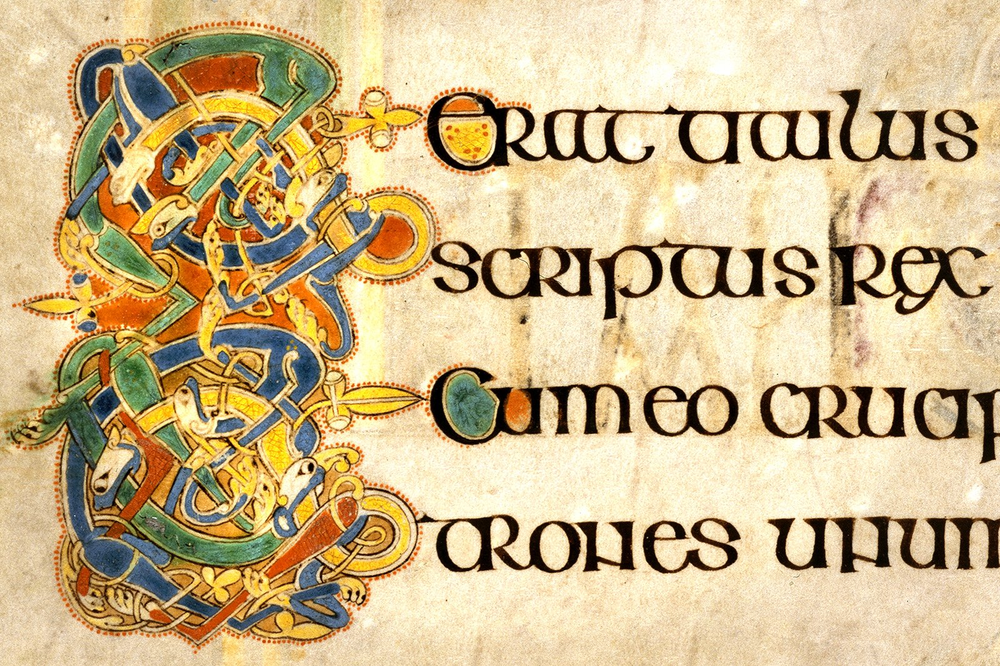
As a child I learned:
Is géar an ghaoth anocht
Corraítear farraige fionn-fholt
Ní h-eagal liom marcaíocht na mara-meann
Ag laochra fíochmhara ó Lochlann!
(The wind is fierce tonight
It tosses the sea’s white hair
I fear no fierce Vikings
Sailing the quiet main!)
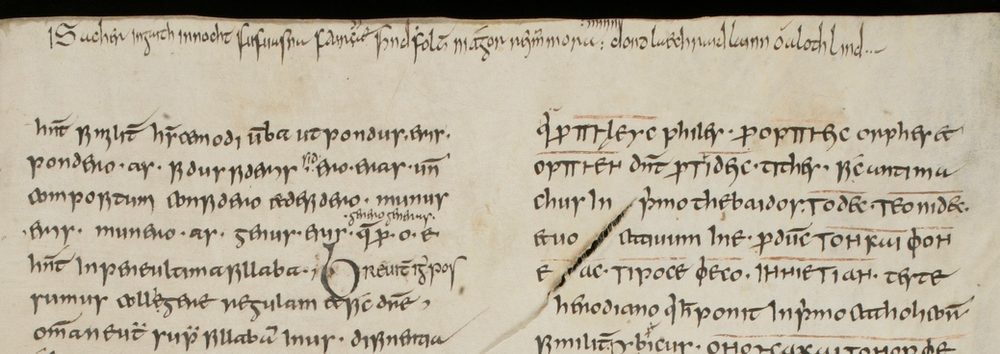
This was a doodle across the top of the page – in Irish – by a scribe in a monastery in Ireland, about 850. He was writing out a Latin grammar book and making notes for his Irish students. Today the original book is in the Abbey library of St Gall in Switzerland, probably taken there for safekeeping from the Vikings! We feature it in our King of the Vikings Virtual Reality Adventure – written by Tim O’Neill. You will meet it again in the calligraphy videos by Denis Brown in our Calligraphy Festival. Seamus Heaney wrote a famous very blunt poem about the monk scribes which features in another video.
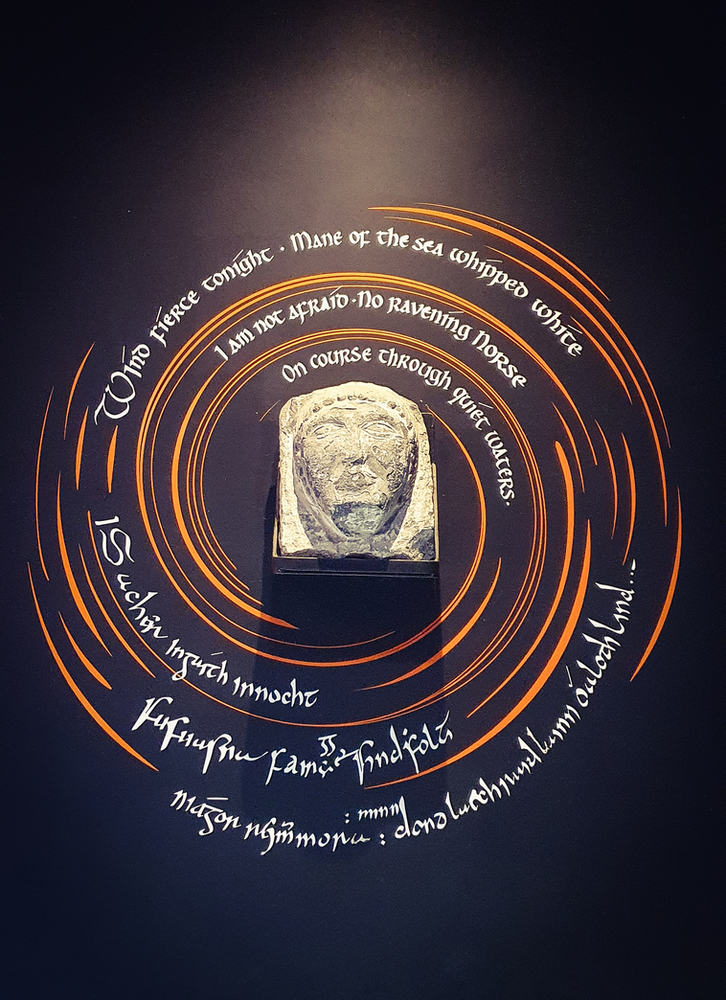
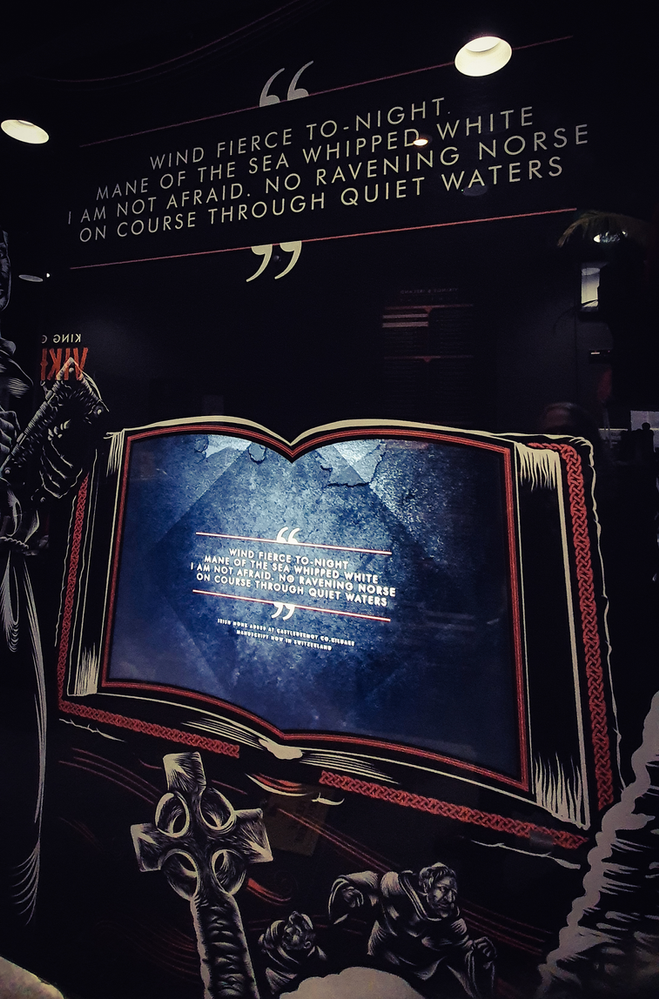
The style of writing in the Great Parchment Book is not the Irish style of the Book of Kells but a later international style called Gothic and that is what we are going to learn to do in our Calligraphy Festival, Celebrating the Art of Writing in Waterford. You see the same script on contemporary tombstone and on heavy metal album covers.
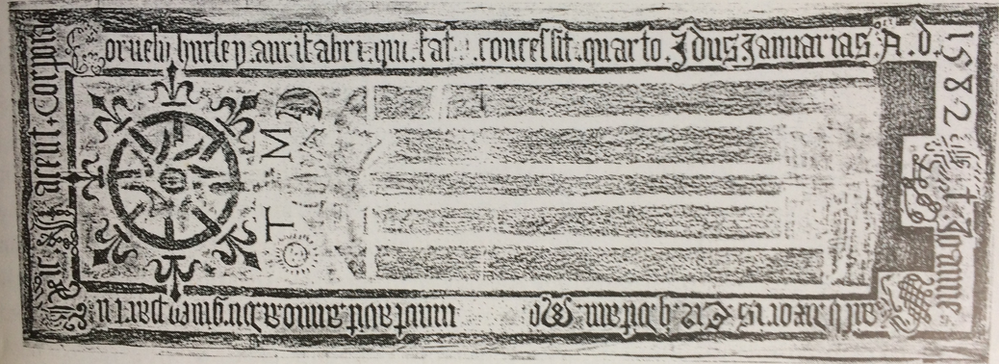
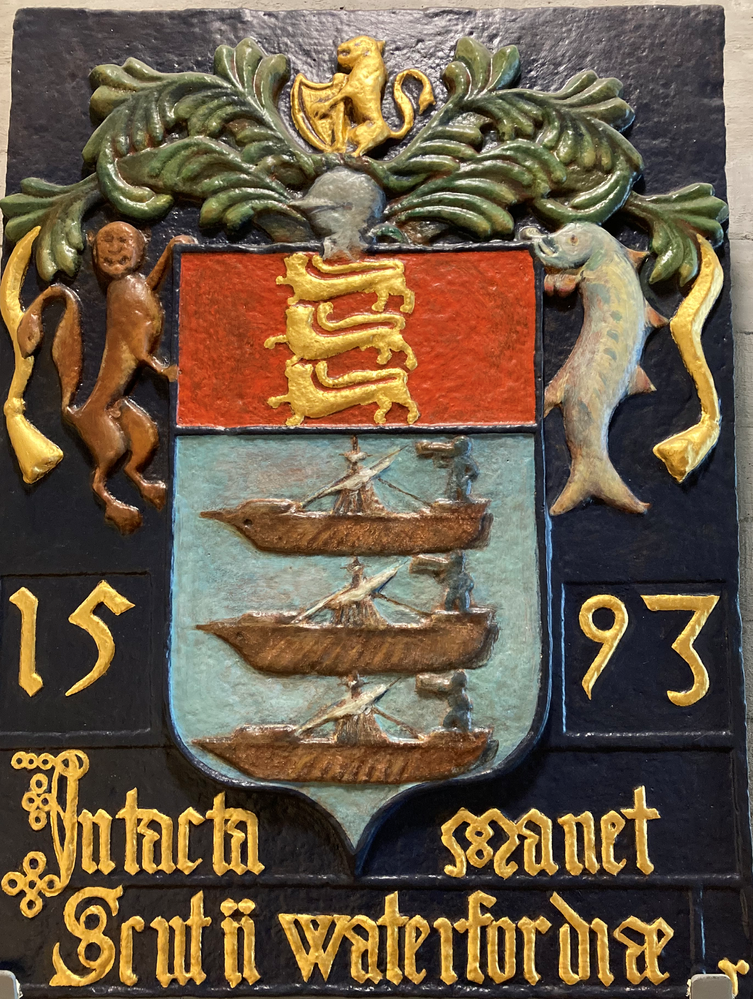

The Calligraphy Festival is Waterford Treasures’ first big event after we reopened our doors in May and the two new museums. We are having a fantastic season and now let’s hope we can get back to many safe inperson events when we can celebrate our heritage including the Art of Writing! As Simon Wicken Mayor of Waterford in 1413, said
‘Come with me to Waterford to sing and make merry!’
Rosemary Ryan


